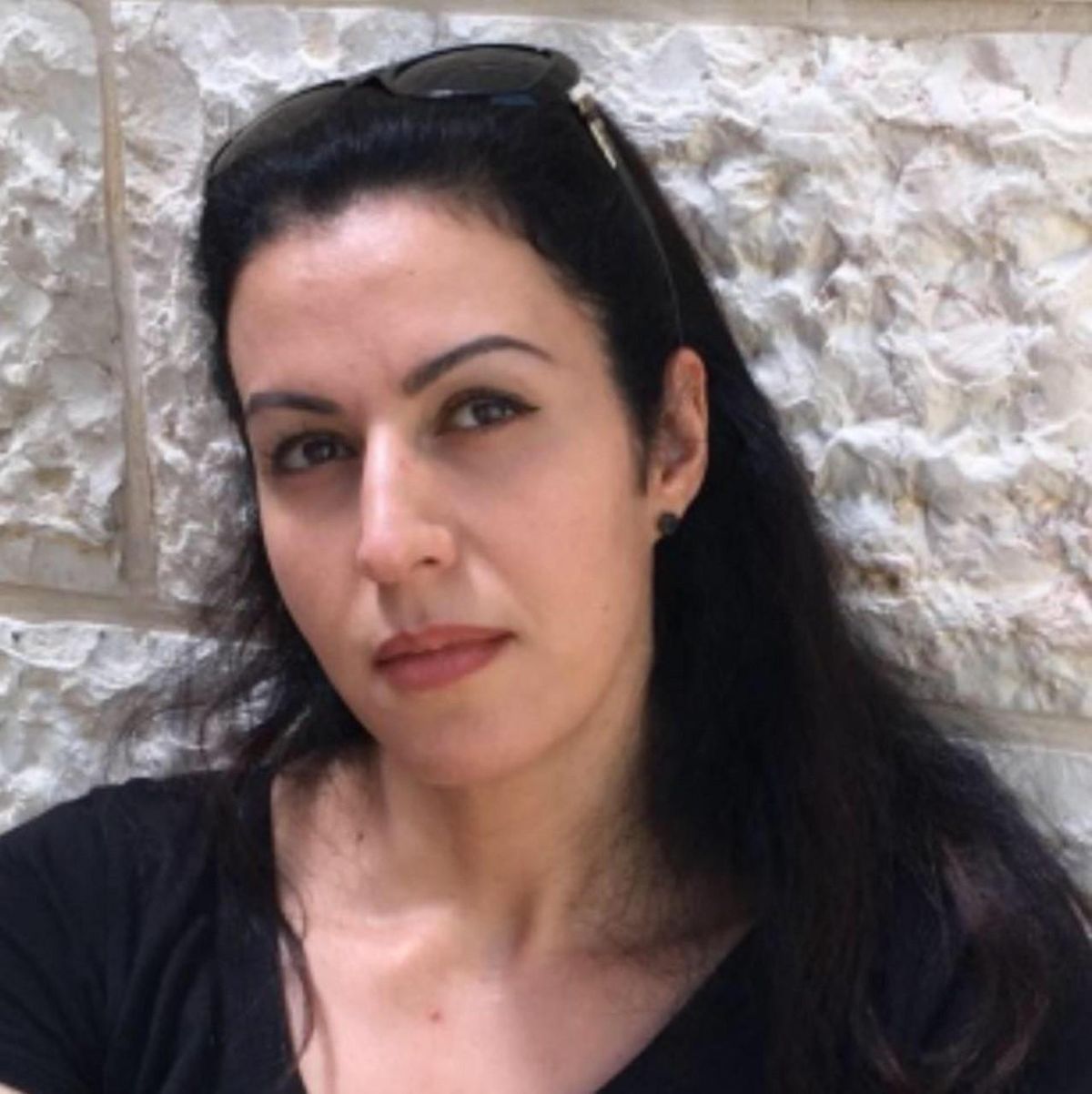Palestinian-American artist Manal Deeb to showcase layered work at Marmot Art Space

Embedded in many of artist Manal Deeb’s layered artworks are images of her own face, but don’t call her pieces “self-portraits.” “They are self-portraits and they are not,” Deeb said. Deeb describes the feminine faces she creates in her pieces as beautiful, powerful and successful.
The women never look fearful or defeated. Despite any potential struggles with discrimination, poverty, loss or stress under occupation, they are still empowered. They look ready and able to carry the burdens for themselves and their families. This is the feminine psyche at its most magnificent.
For Deeb, the female face is a springboard for revealing deeper and more spiritual connections. Deeb creates women on canvas who are a hybrid of their experiences and identities, each one a strong, unafraid and even hopeful individual. The artist perceives her hybrid self as empowered and positive despite her feelings of exile and memories of the loss of her childhood homeplace.
“I call myself a hybrid being both here (in America) and there (in Palestine),” Deeb said. “The women I create are extremely brave. They reveal my deep personal identification with my Palestinian history and culture.”
Deeb, 51, was just 18 years old when she immigrated to the United States from her hometown of Ramallah, in Palestine’s West Bank. She attended art school at the University of Illinois in Chicago. Now a Fairfax, Virginia, resident, Deeb will make her first visit to Spokane on Friday to debut her solo exhibition at Marmot Art Space in Kendall Yards.
Deeb, who has exhibited all over the U.S. and abroad, is a modern American woman, a wife and mother to three daughters. But the memories of her homeland, the knowledge of the anguish many have to bear, especially women, are layered into her paintings.
She blends Arabic words and symbolic calligraphic forms with beautiful, sometimes tranquil, images of faces and people. Often the subjects are clad in traditional Middle Eastern dress. Deeb layers paints, pastels and inks, and sometimes digital images, onto her canvases, evoking the look of chipped wallpaper or faded graffiti aging on weathered surfaces.
Deeb’s layers feel like more than just paint; they are symbolic of the psychological layers we all carry of our own experiences, cultures and traditions. Exploring psychology has been a longtime obsession of Deeb’s, and it shows.
After drifting from art to raise a family and try her hand at other careers to make money, Deeb returned to school to study psychology. She earned an advanced degree in the Psychology of Art at George Mason University. After maturing and gaining insight into her own psychology, Deeb began a daily practice in the studio again. That was 13 years ago, and she has never stopped.
“It’s a beautiful addiction, and it gives me life, to just get lost in the studio,” Deeb said. “Time goes by, and I look up and think, ‘How did that image happen in front of me? That was not a plan.’ I like the surprise and the spontaneous.”
One of the 14 paintings that Deeb will show in Spokane is titled “Queen.” It depicts a woman wearing a colorful, jeweled headpiece with large Arabic calligraphy surrounding her face, even scrawled across it. The subject’s wise and mysterious eyes gaze at the viewer, as if to say, “I have secrets and powers you will never know.”
The backstory of this queen might include tragedies, but her demeanor is one of great achievement. “Looking at psychology, we are always thinking about what the sickness is or what is the negative,” Deeb said. “But if we focus on the positive, on how we make life better, we would gain more balance, and we will succeed in making change.”
Deeb’s hope for Spokane audiences is that they enjoy her show. But as is typical with Deeb, there is a deeper meaning to that experience. “If you experience beauty in a work of art, to the extent that it looks unreal, then you must have felt the artist’s soul,” Deeb said. “Just as the believer finds his soul in religion or in God, the enjoyer of art finds his or her soul in the work of the artist.”